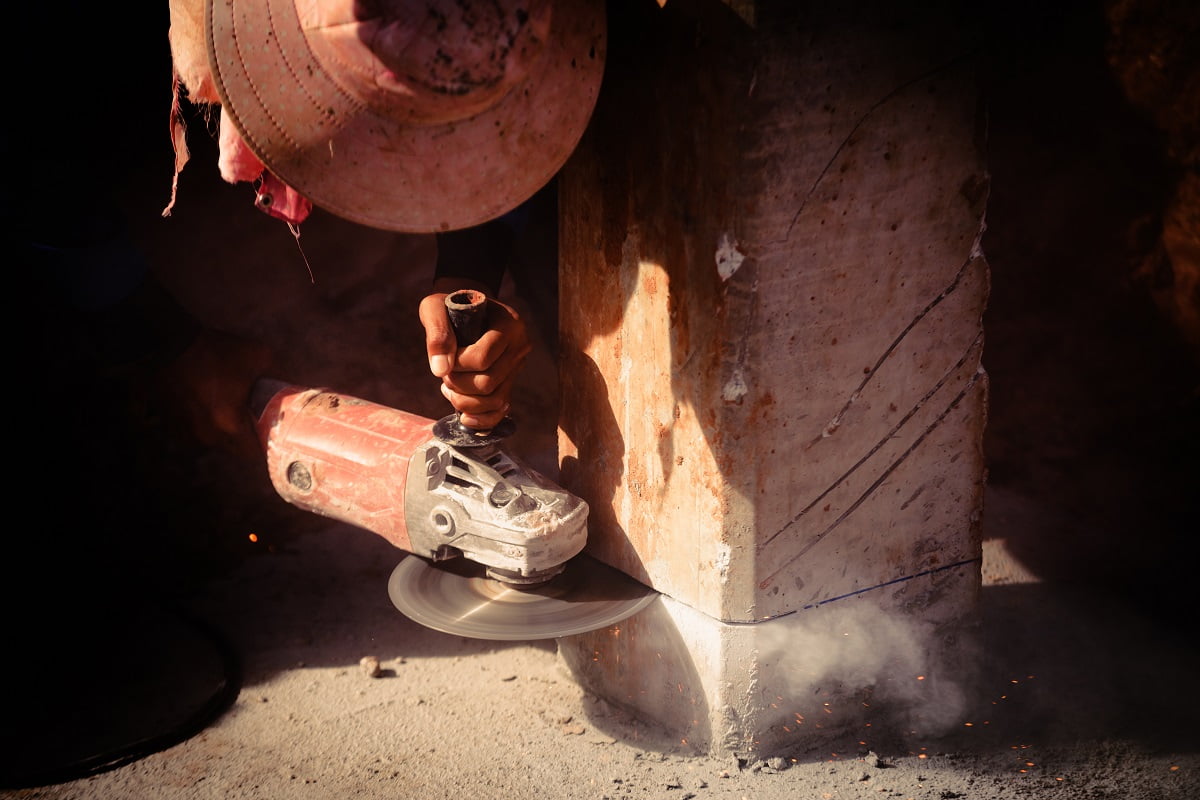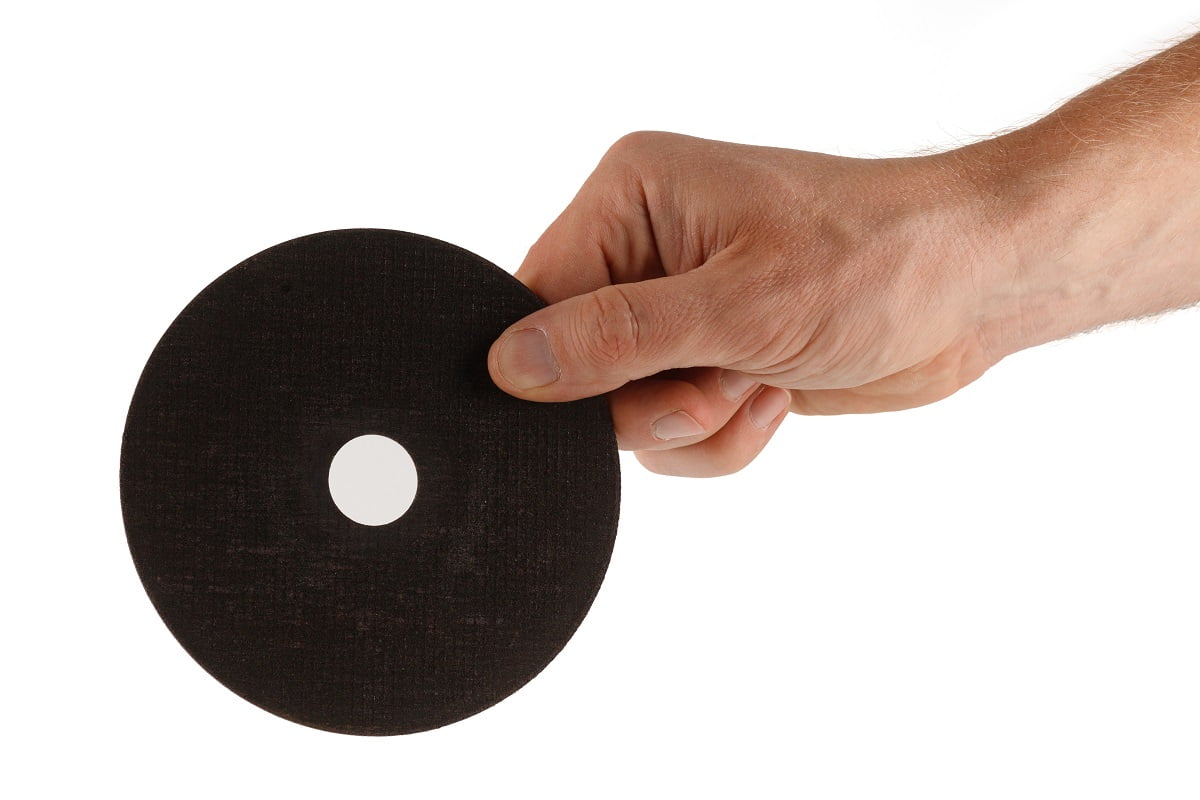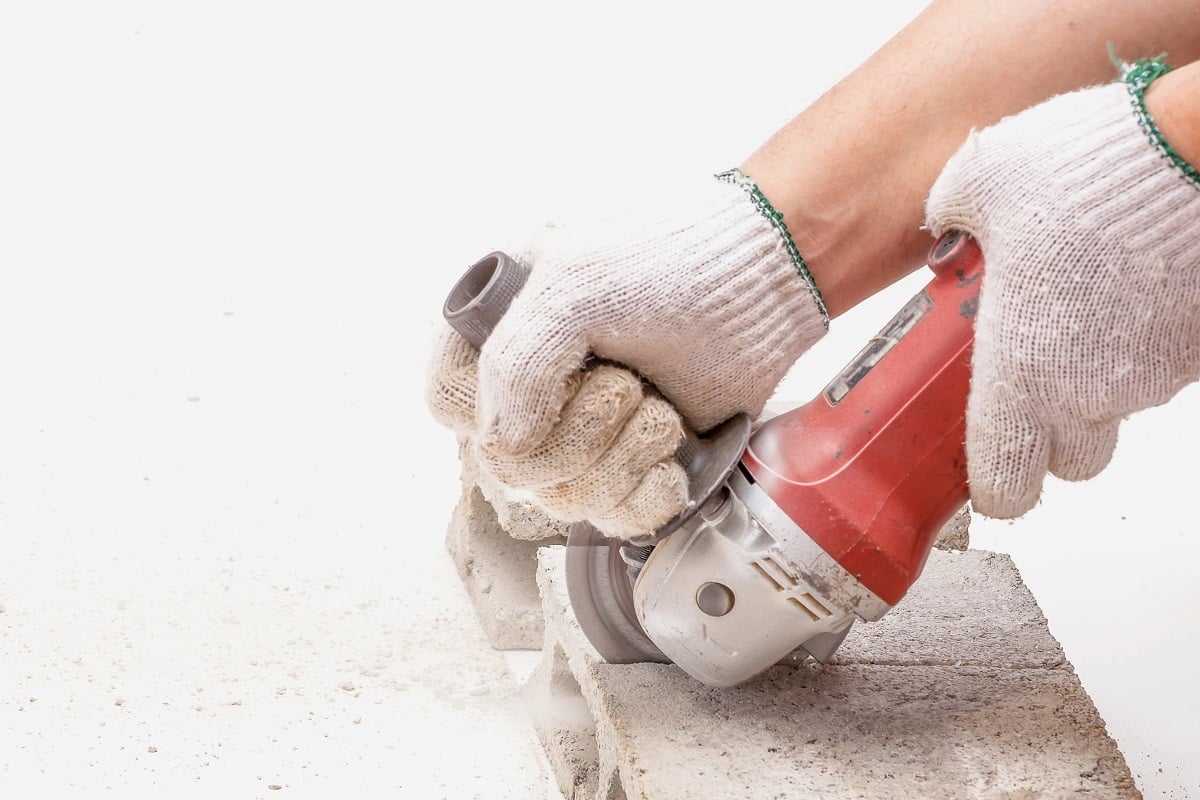An angle grinder is a handheld power tool that can be used to perform a series of mechanical tasks like cutting, grinding, and polishing. When equipped with a grinding or diamond blade, the tool cuts concrete efficiently.

Do you think that working with concrete is a messy business? If you aren’t very experienced in DIY projects but would like to learn a thing or two about angle grinders, then this guide is for you.
Angle grinders are versatile tools that can be used to do an array of mechanical tasks. Whether you want to cut a concrete block or polish a tile, an angle grinder can do the job perfectly.
Different Attachments For An Angle Grinder

Angle grinders are highly versatile and can be equipped with a variety of discs to suit the task at hand. From grinding to cutting and from sanding to polishing, an angle grinder can be used to do any job.
1. Angle Grinder Discs
Grinding discs are the most common ones and come in different sizes and types. Just like sandpaper, their hardness is measured in terms of grit. A higher grit number indicates less coarse texture, while a disc of a lower grit level is more coarse.
The latter can grind faster, but it produces more sparks while working and gives a rough look to the final product. When our team compared both the types, we noticed that angle grinder cut concrete more efficiently when it was equipped with higher grit disc.
Moving on to its usage, grinding blades can be used to remove excess material from a surface, prep up metal before welding, and clean up cuts. You can use them to sharpen your gardening tools or grind metals before welding.
2. Cut-Off Wheels
As the name suggests, cut-off wheels are used for slicing metal. They are the most dangerous type of angle grinder blades due to their thin build for delivering accurate cuts. They are the best for doing detailed work, but we suggest being extra careful while working with them. In case you abruptly change the position of the grinder, a cutting blade can easily shatter, and the small flying parts can cause serious injuries.
Moreover, you can use cut-off discs for cutting metal tubes, bars, and sheets. They are also good for altering the length of bolts and cutting welds. Just ensure that you are properly geared up while using them.
3. Flap Blades
Moving on, a flap disc is quite similar to a grinding wheel but is primarily used for finishing. It has a smooth texture and can be used to polish ceramic tile, metal, concrete materials, and several other solid materials. Just like grinding blades, flap discs also come in different grit levels. The higher the grit, the smoother the blade will be.
If you are looking for an angle grinder attachment to remove scratches and burrs from your project, then a flap disc is a competent choice. It can also be used to smoothen the edges and polish gouged-up metal.
4. Wire Discs
Wire discs are brush instruments made with wire bristles typically used for cleaning paint and rust. Depending on their texture, wire discs are of two types - crimped and knotted. The former has wavy or twisted filaments and is used for light polishing, while the latter, with metal wire loops, is better suited for heavy brushing.
These attachments are ideal for scraping rust and corrosion, removing waste from metal and concrete surfaces, washing, surface painting, mixing welds, polishing, and deburring. Furthermore, if you want to remove resin from a concrete block, then this one is your best bet.
5. Segmented Rim Diamond Blades
Diamond blades are hands down the sharpest angle grinder attachments. They are called so because the wheels have segmented rims and synthetic diamonds at the edge. The sharpness and durability of the blade increase with its number of segments.
Owing to their diamond rims, the blades can be used to cut hard-to-penetrate and tough materials like granite, porcelain tile, concrete pavers, etc. It is used for dry and wet blade operations alike and is efficient for both types of cutting.
6. Polishing Pads
Lastly, polishing pads are made of smooth material and are used for gently polishing a surface. You can find a lot of options on the market and choose one based on the desired smoothness level. For instance, if you want to polish a dent in your car, then a buffing wheel made of wool is the perfect option, as you don’t want to scratch it.
However, if you want to polish concrete blocks, then you can choose a more coarse polishing pad. Another thing worth noting while using these attachments is the speed. As a rule of thumb, maintain an optimum speed while using polishing pads, as going faster can damage the surface while going slower won’t make much of a difference to the finished product.
Are Angle Grinder Blades Universal?
Angle grinder blades are generally universal and can be used with any model. However, some grinders might come with unique orientations and connecting ports, so it is best to check your exact model before buying a blade.
What Angle Grinder Blade Cuts Metal?
Metal is a tough material, and it takes enormous strength for tools to cut through it. Therefore, it is essential to select the right angle grinder blade for cutting metal. If you pick the wrong one, the blade can shatter during the process and injure you. While a sharp and thin blade is more prone to slipping, a blunt one can leave the job unfinished.
To strike the right balance, we suggest working with cut-off or diamond blades. Both these attachments are sharp, cut deeper, and make clean cuts. This eliminates scratches and burrs, giving a smooth and finished edge to the metal pieces.
How To Use Angle Grinder Blade To Cut Concrete?
We told you how to equip your angle grinder according to the task, be it cutting metal or concrete. Now let’s discuss how to use your handy tool to perform that task, as in, how to cut concrete. Concrete cutting process can be daunting, but here are a few simple steps you can try:
1. Put On Safety Gear
Handling an angle grinder blade is no easy task, and even some experienced DIYers are prone to hurting themselves while using it. So, as a rule of thumb, wear proper personal protective equipment to keep yourself safe from accidents and injuries. A complete protective kit for cutting concrete comprises the following gear:
- Safety glasses to keep your eyes safe from debris and sparks
- Earmuffs to stay clear of the noise
- A dust shield or face mask so that you don’t inhale any powdered concrete dust or silica
- Gloves for holding the handle better and preventing slips and accidental cuts
- Boots to stay safe from debris
- Tightly-fitted clothes so that fabric doesn’t get caught by the angle grinder disc
2. Prep Up Your Workspace
Once you have put on the safety gear, you need to prepare your workspace. We suggest using the angle grinder in an open and clear area where there are not many people, especially kids. Try and avoid using it in your garage because it is usually cramped up with discarded stuff. Declutter your workspace, taking special care that the floor isn’t littered so that you don’t trip and fall.
Equip your angle grinder beforehand and set its disc by opening the spindle and inserting the preferred diamond blade. After equipping the blade, move on to the concrete slab you will be cutting.
Make markings using chalk and ruler to ensure perfect cuts. If the block you want to cut is small, then we emphasize clamping it down to your workstation. That’s because you will be more prone to slips due to the smaller working surface, not to forget that tiny pieces fly more easily while cutting.
3. Fire Up The Angle Grinder
When everything is ready, plug in your angle grinder to a power source and adjust the blade guard such that it is positioned between the tool and your body. Now turn it on, and once the disc reaches its maximum speed, let it run for at least half a minute.
4. Cut The Concrete Slab
Move the grinder toward a concrete slab at an angle of 90° and make a cut of nearly half the depth of the slab. After making the initial divot, keep cutting until you reach your desired depth by moving the grinder to and fro.
Start carefully with a light hand, cut slower, and eventually work your way through the concrete. You can apply more pressure as the cut gets deeper. Just make sure that you don’t force the blade into the slab. After a minute or so, you will gain momentum and will be able to cut the slab effortlessly.

Angle Grinder Blade For Concrete Conclusion
An angle grinder is the only tool that can be used for a plethora of tasks, such as grinding, polishing, cutting, deburring, etc. It is a handy device that comes with different types of attachments and handle accessories to be better suited for carrying out different projects.
However, if you are looking for an attachment that is the best for cutting concrete, then we recommend using diamond blades. That’s because these are the sharpest and cut the concrete’s surface efficiently.
That said, we have reached the end of this informative guide. Thanks for reading, and do try using an angle grinder for cutting concrete. We’ll see you next time!
